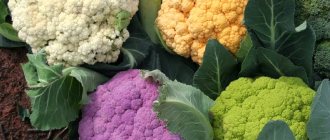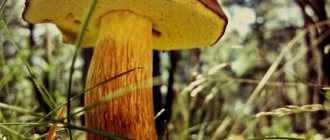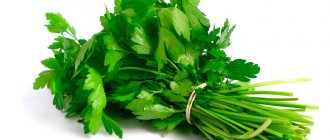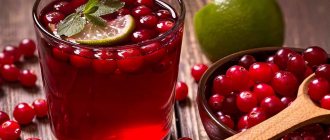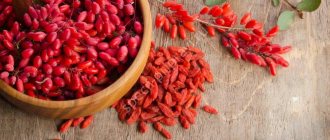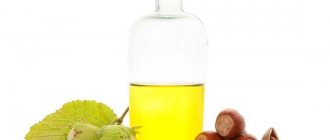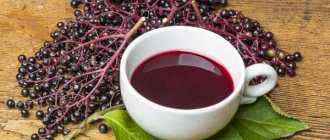What is seaweed?
What algae is called seaweed? Sea kale is a brown seaweed; two types of it are eaten - sugary and palmate. You can meet kelp on the shores of the Seas of Okhotsk, Japan and Barents, where huge thickets of it grow at incredible speed.
The beneficial properties of seaweed have been known since ancient times, and it was previously used only by coastal residents, but now they know about it anywhere in the world. In the east they use it raw, pickled, stewed, they prepare soups, fillings, sauces with it and try to include it in their own diet every day. And all this is thanks to its valuable composition, so how is seaweed beneficial for the human body?
What is contained in seaweed?
The chemical composition of seaweed may vary depending on the variety and area of cultivation, water temperature, sea salinity, and lighting. The composition of the ready-to-eat product is influenced by the cooking method. The energy value is only 5 kcal per 100 grams. Protein contains 13%, carbohydrates - 59%, fats - 2%, fiber - 11%, moisture - 12%, mineral salts - 3%.
Laminaria contains vitamins, amino acids, polysaccharide (mannitol), folic and pantothenic acids, proteins, fructose, alginates (alginic acid salts), sterols and the following mineral components:
- iodine (per 100 grams of product there are 160,000 mg);
- sodium;
- potassium;
- iron;
- magnesium;
- bromine;
- cobalt;
- phosphorus;
- manganese;
- sulfur
What vitamins
Laminaria is a natural balanced complex, including a set of macro- and microelements, vitamins. Moderate regular consumption of algae promotes rapid tissue regeneration, strengthening the immune system, and normal hematopoiesis. The vitamins in seaweed help rejuvenate the body. The product is especially useful for children, as it improves vision and memory. The vitamin composition of the product includes:
- vitamin C (ascorbic acid);
- vitamin A (retinol);
- vitamins B2 (riboflavin), B1 (thiamine), B6 (pyridoxine), B9, B12;
- vitamin D (calciferol);
- vitamin PP (niacin equivalent);
- vitamin E (tocopherol).
How much iodine
Brown algae is rich in iodine in organic form. One hundred grams of kelp can contain up to 1.6 grams of useful elements. As a rule, the content depends on where the algae grew, as well as on the method of preparing the edible product (canned, dried or fresh). During storage, a decrease in the amount of microelement by up to 60% can be observed; during heat treatment, iodine in seaweed is further reduced by 22%. Therefore, it is healthier to eat kelp in its raw form.
- Herbs to boost immunity
- Birth control pills that don't make you fat - a list of the best non-hormonal drugs for women
- The highest paid professions in the world and Russia
Composition and benefits of seaweed
The general composition of kelp is the same, but some elements may vary depending on the location and conditions of its growth. It contains more than forty types of vitamins: A, E, D, C, B vitamins, micro and macroelements: iodine, zinc, bromine, potassium, phosphorus and many others. Sea kale is a valuable source of minerals, which are present in abundance. It also includes folic acid, pantothenic acid, and a complex of carbohydrates.
Iodine, which is contained in seaweed, is indispensable for problems with the thyroid gland. Just 30 g of algae per day can fill your daily requirement. Remember that the beneficial effects on all functions and systems of the body are preserved only in fresh, frozen or dry form. And so the popular canned cabbage loses most of its valuable elements. What are the benefits of seaweed for women and men:
- Reduces the likelihood of colds, increases immunity, makes the body more resistant to various infections.
- Reduces the risk of cancer.
- Normalizes the functioning of the heart and blood vessels, stabilizes blood pressure, prevents the formation of blood clots.
- Increases hemoglobin and lowers cholesterol levels.
- It has a positive effect on the thyroid gland, which helps normalize hormonal levels.
- Kills pathogenic microbes.
- Removes waste, heavy metal salts, and toxins from the body.
- Helps the functioning of the nervous system, calms, relieves chronic fatigue, relieves stress.
In addition, seaweed is also recommended for those who are overweight or watching their diet. Its beneficial properties increase physical and mental activity .
It has a beneficial effect on the functioning of the digestive tract: it normalizes intestinal motility and metabolism. With regular use, you can get rid of constipation and colitis.
What are the benefits of seaweed?
Seaweed has gained immense popularity due to its unique composition. Doctors say that systematic use of this product improves metabolism and increases body tone. The complex of polysaccharides found in kelp has a stimulating effect on the immune system.
Here are other beneficial properties of seaweed:
- prevents the formation of blood clots;
- eliminates increased blood clotting;
- high levels of iodine help eliminate the deficiency of this microelement;
- reduces the risk of atherosclerosis;
- can be used to prevent endemic goiter;
- removes toxins from the body;
- cleanses the blood of processed cells;
- promotes the treatment of prostate diseases;
- helps normalize hormonal levels;
- inhalations speed up the treatment process for colds;
- helps eliminate sexual dysfunctions;
- normalizes digestion, can be used for chronic constipation and colitis;
- reduces the likelihood of tumors;
- When applied topically, it improves complexion and increases skin elasticity;
- improves memory, increases performance.
Benefits for women
Laminaria is an excellent dietary product that is suitable for women who care about their health. Girls who regularly consume algae rarely experience breast cancer. The product is often prescribed when planning pregnancy. At the same time, the benefit of seaweed for women is that it helps prepare for bearing a child, restores the normal hormonal levels of the female body, and stabilizes the menstrual cycle.
Algae have also found application in cosmetology. Effective anti-cellulite wraps are prepared on their basis. Laminaria is recommended for weight loss; it removes excess water from the skin, stimulates metabolism, and eliminates toxins (this is its main advantage). Popular creams and masks for hair and face have excellent anti-aging properties, smooth out wrinkles, tones the skin, and improve hair condition.
- Angiography of cerebral vessels
- Beef liver: recipes with photos
- What to do for vaginal dryness: remedies
For men
Men who regularly consume fresh kelp improve the condition of the nervous system and gastrointestinal tract. In addition, the benefits of seaweed for men are that this product helps prevent erectile dysfunction and increases the viability and activity of sperm. Kelp is a powerful aphrodisiac. Even a small portion of fresh product stimulates testosterone production and increases sexual desire. Cabbage also reduces the risk of prostate cancer in men.
What are the benefits of kelp for women?
The benefits of sea kale, which are very high for women, are used to improve reproductive function. There are many drugs based on kelp that help fight gynecological diseases. It increases attraction in girls and women.
The therapeutic effect of kelp is similar to healing mud, which is why it is used for inflammation of the female genital area in the form of wraps, baths, and rubbing. Algae normalizes the menstrual cycle. It is also useful for appearance: strengthens hair, nails, improves the structure of the skin. Used in cosmetology, rejuvenates, tightens, fights cellulite.
Contraindications and harm of seaweed
Consumption of absolutely any product is good in moderation, and seaweed is no exception. You should not eat it in unlimited quantities, or if you have a possible allergic reaction to this product. Contraindications for seaweed include diseases such as:
- iodine intolerance;
- nephritis;
- allergy;
- hemorrhagic diathesis;
- acne;
- furunculosis;
- kidney disorders.
It should not be used by children under three years of age, with problems with the endocrine system, or with diseases of the digestive tract in the acute period. If you have any serious illnesses, be sure to consult your doctor before consuming seaweed.
Many mothers are wondering whether seaweed can be eaten while breastfeeding. Since the product contains a lot of iodine and calcium, its use will be very useful for both mother and baby. However, it is worth remembering a sense of proportion, since the biological substances in its composition are very active. It is also used with caution during pregnancy due to its high iodine content. In large quantities, it can penetrate the placenta and cause fetal development abnormalities.
Contraindications for seaweed depend on the place where it is obtained. Thus, polluted waters can transfer all harmful substances to algae, so consuming such a product only threatens to have a harmful effect on the body.
How to properly eat seaweed
It is advisable to eat kelp fresh or dry. The optimal daily dose is two teaspoons. It can be added to soups, sauces, meat, salads, and vegetable dishes. Use it as a seasoning or as a substitute for salt. For convenience, dry seaweed is ground. In its dry form, the product is maximally saturated with useful substances, because during its processing only moisture is removed, while vitamins and microelements remain in full.
Sea kale, whose calorie content per 100 grams is only 5.4 kcal , is often used in all kinds of diets. At the same time, kelp perfectly absorbs liquid, swells when it enters the stomach, and gives a feeling of fullness. And the iodine present in it helps burn excess fat. To suppress hunger and when dieting, use an infusion based on brown algae, drinking three tablespoons before meals.
Features of seaweed
Sea kale is a food product based on brown algae. It is produced from kelp that is two years old. It is in it that useful substances accumulate most clearly. But not all types of kelp are suitable for the production of seaweed. It is worth understanding both the list of suitable species and their basic chemical composition.
What varieties are there to create seaweed?
- Laminaria saccharina or saccharina is an algae containing up to 3% pure iodine. This provides significant disinfecting properties of the plant, and also allows the use of saccharin in the prevention of atherosclerosis, goiter and other related diseases. Now the plant is not only mined at sea, but also cultivated;
- Finger-cut kelp, or digitata, is found exclusively in the North Atlantic. It is also suitable for creating seaweed. But the cost of a dish made from it is higher, since digitata has more complex extraction and processing processes;
- Japanese kelp, known as japonica, grows off the eastern coast of Eurasia, in the area of the Sea of Japan. It is mined at a depth of four to ten meters, and in rocky areas its range reaches 35 meters. This algae is quite rare, so it is especially valued as a commercial harvest.
The use of seaweed in cosmetology
In cosmetology, the beneficial properties of seaweed are used to make masks, peelings, scrubs, creams, and lotions. It has a beneficial effect on hair and skin condition. She is often given body wraps and baths.
In the food industry, kelp is used as a natural preservative. It contains special substances - alginates, which have the ability to preserve or are used as a thickener. It is added to ice cream, baked goods, and jelly.
Sea kale is a very healthy product; in the absence of contraindications, it is advisable to introduce it into your daily diet. It will saturate the body with a colossal amount of useful microelements and vitamins and relieve many diseases. When used in cosmetology, it will get rid of wrinkles, prevent their appearance, and become an assistant in the fight against cellulite.
Look at the recipe for preparing a dietary dish from dry seaweed:
What does seaweed consist of?
It consists of active substances: carbohydrates (about 60%), proteins (about 13%), fiber (about 10%), fats (about 2%), mineral salts (about 3%).
It holds the record for the presence of iodine, sodium, magnesium and potassium. In addition, it contains bromine, manganese, zinc, iron and other substances. Of the vitamins, it is rich in vitamin A, B vitamins. Vitamins C, and also replenished the rich composition of this food product.

